Abstract
1. The slow component of delayed rectification in the atrial muscle membrane of Rana ridibunda has been analysed quantitatively using a voltage-clamp technique.
2. It is shown that the current is proportional to a variable which obeys first-order kinetics. At negative potentials the time constant of this process is very long (τ = 3 sec at -55 mV) but it becomes faster at positive potentials (τ = 1·85 sec at +25 mV).
3. In the steady state the degree of activation is a sigmoid function of potential. The activation threshold varies substantially between preparations but is usually negative to -30 mV.
4. The instantaneous current—voltage relation is nearly linear and its reversal potential most frequently lies between zero and -30 mV.
5. The properties of this current system resemble those of the current system ix2 found in mammalian Purkinje fibres.
Full text
PDF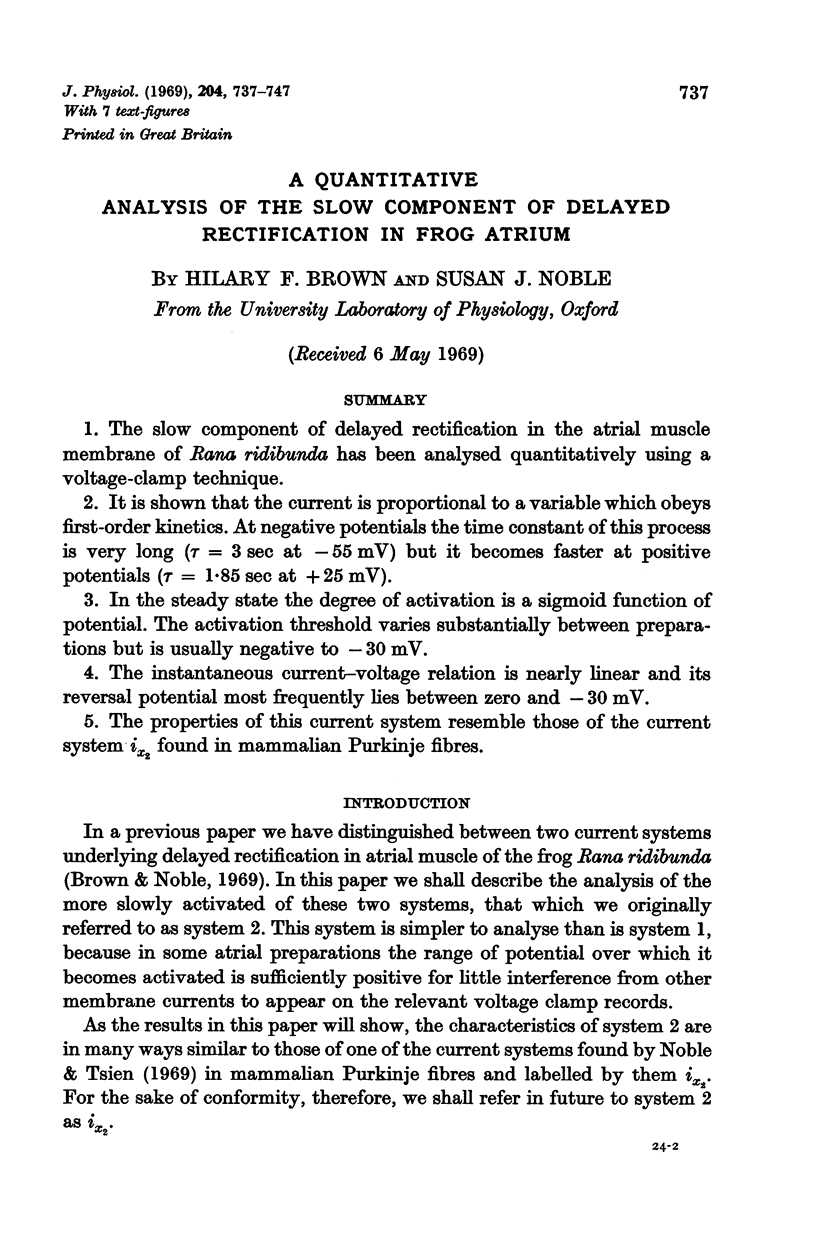
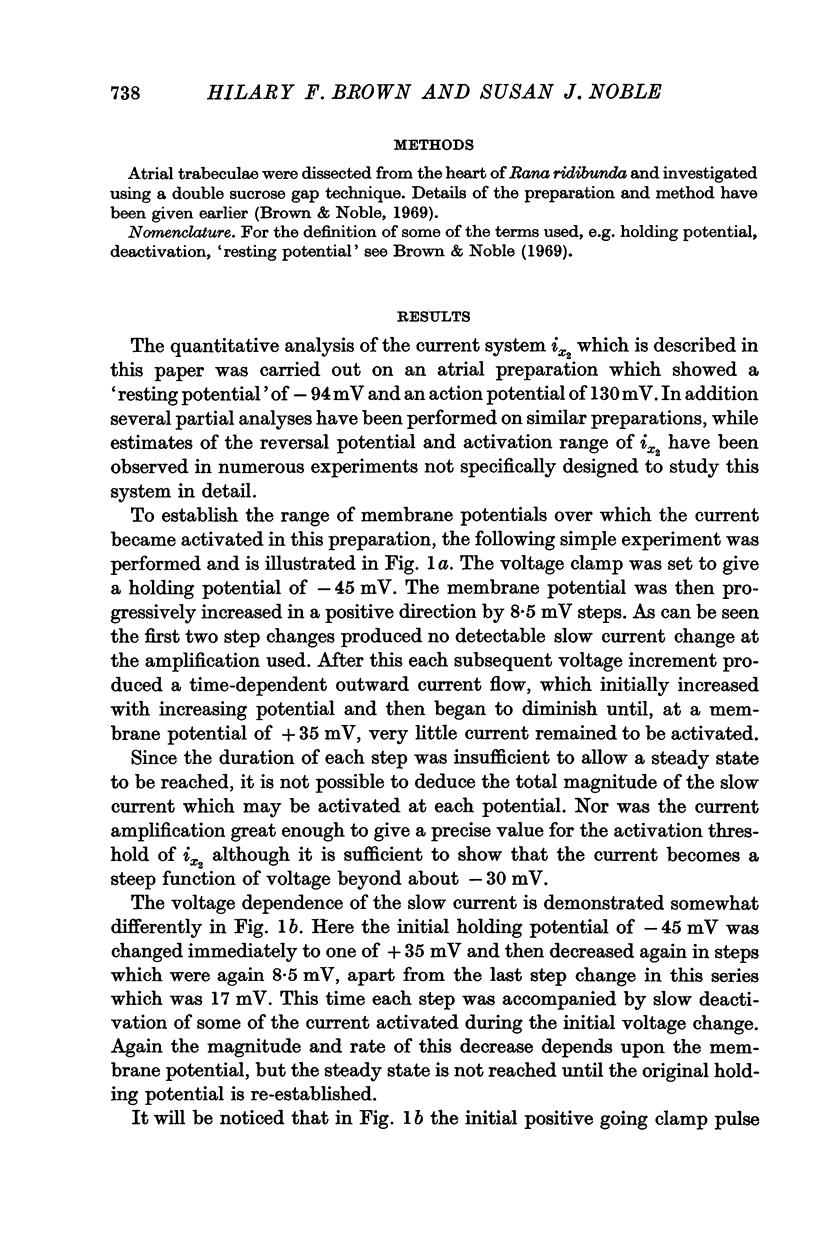
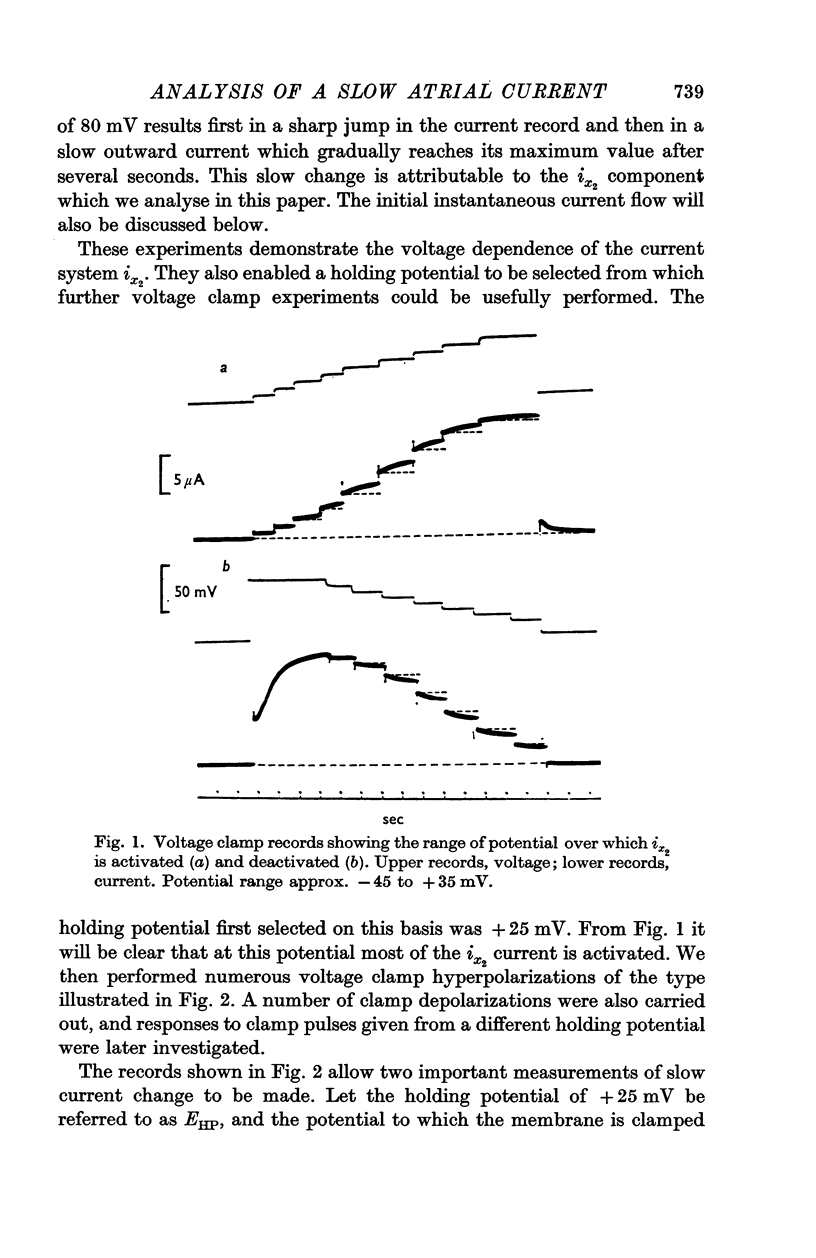
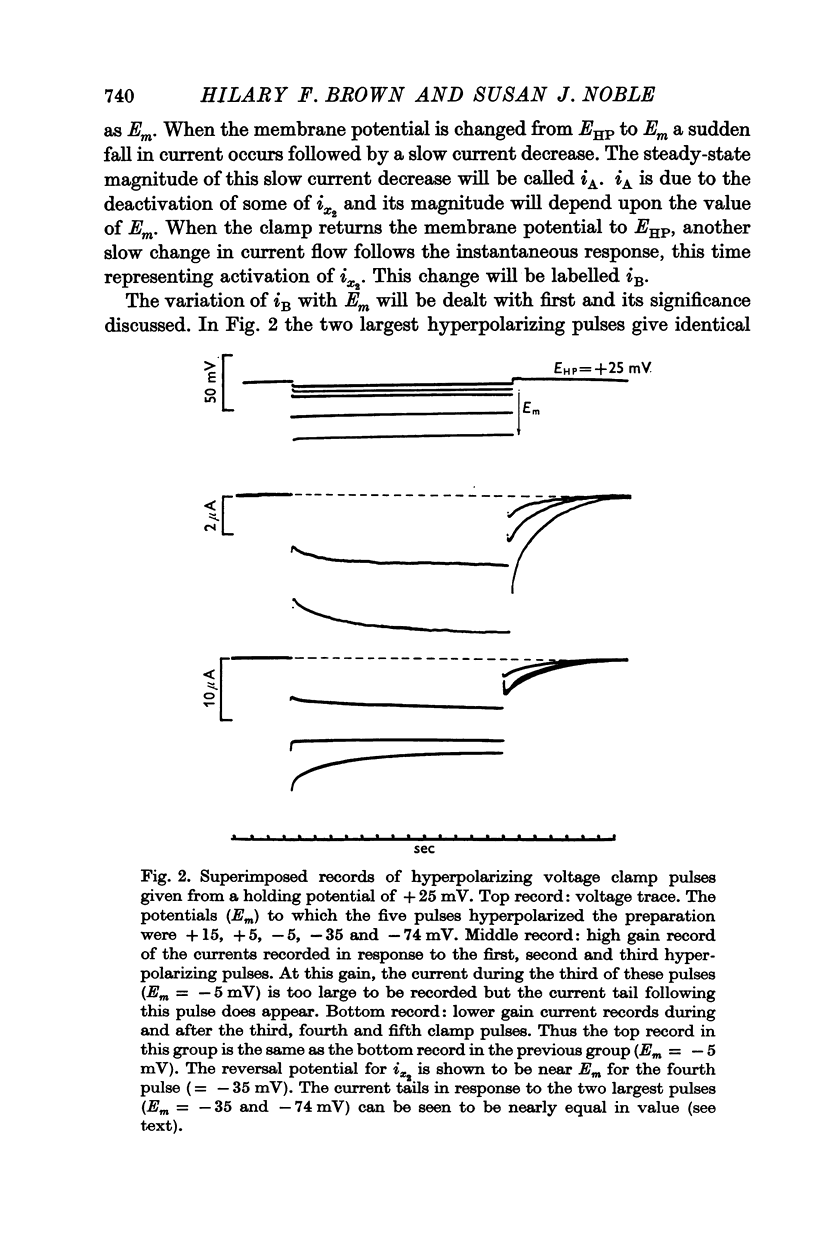

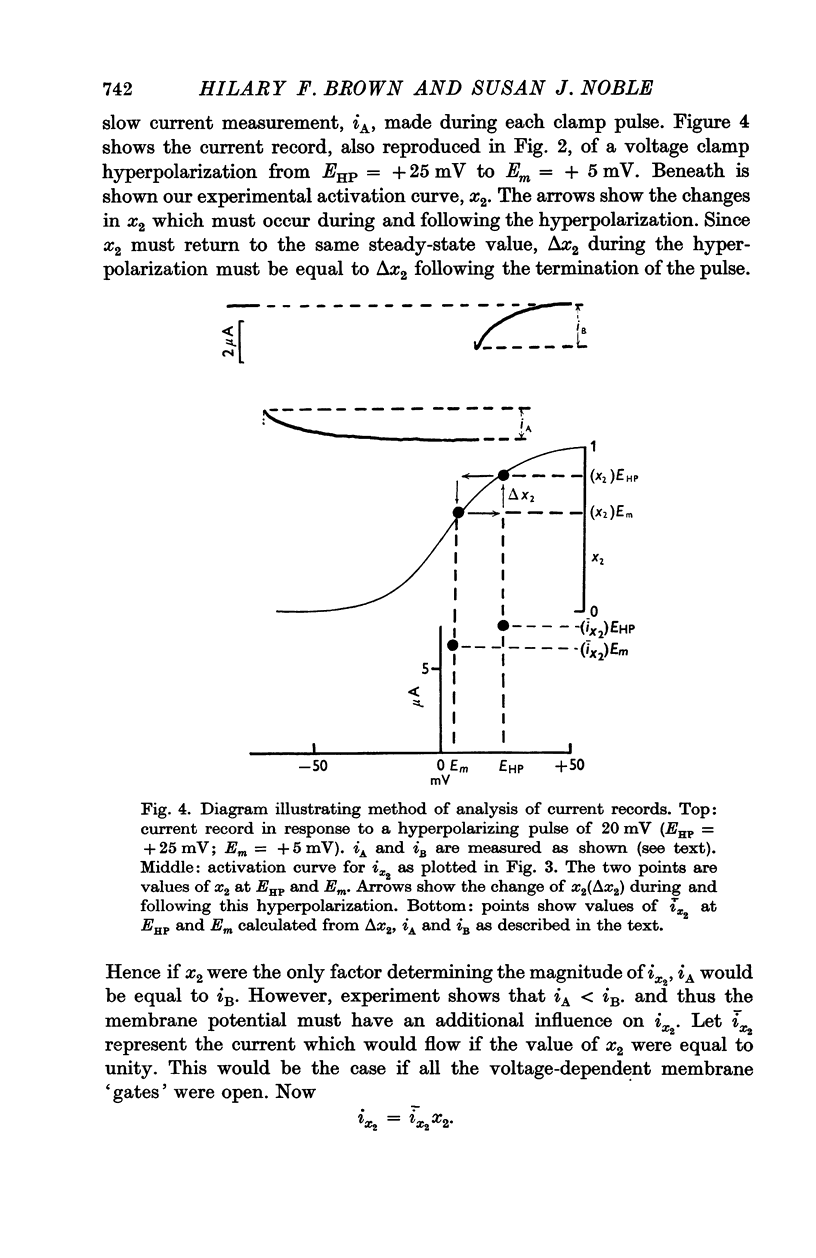
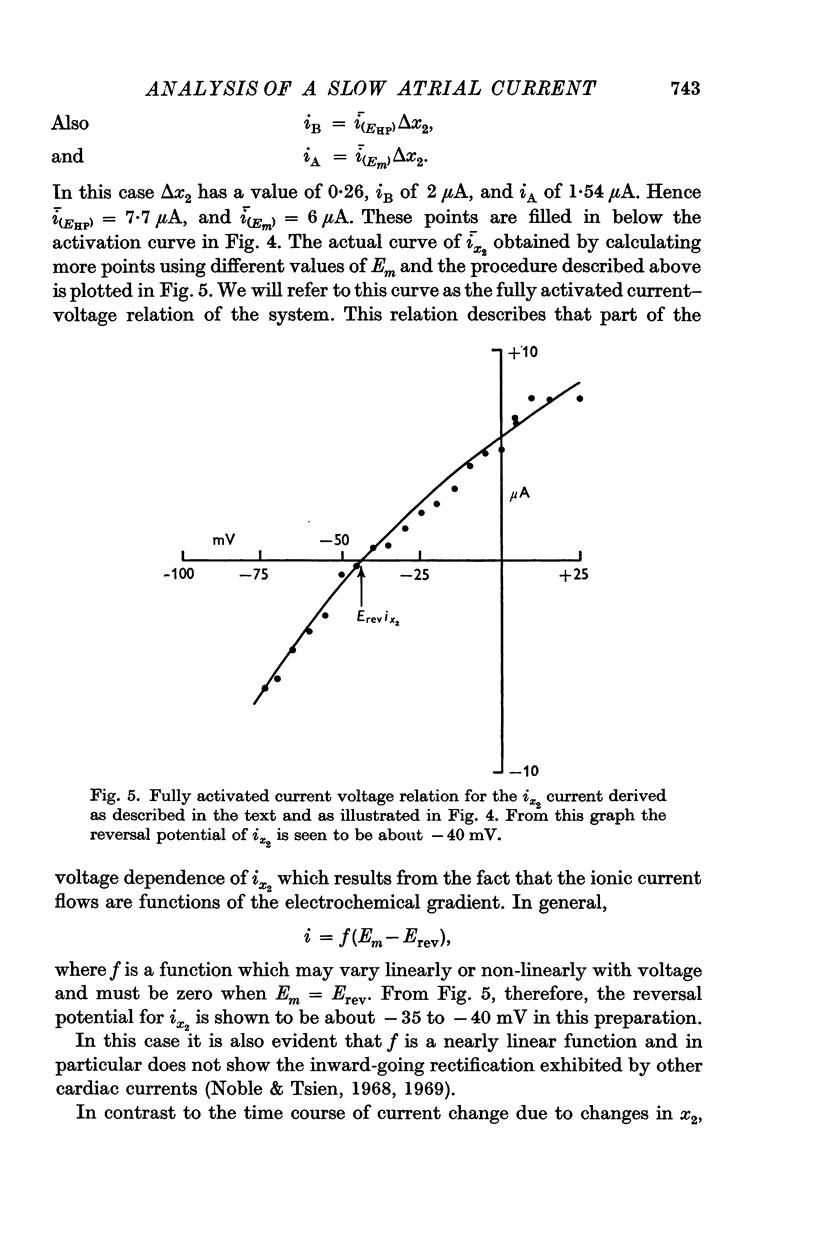
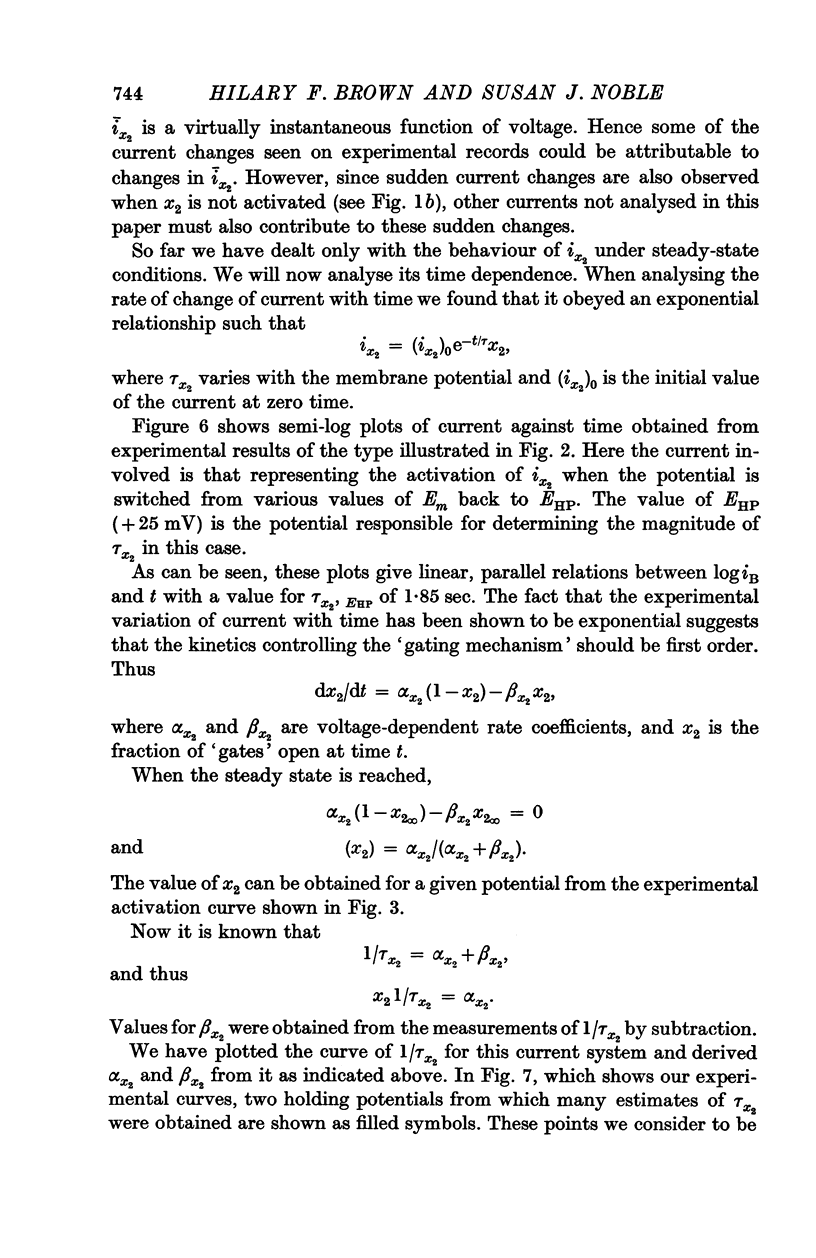

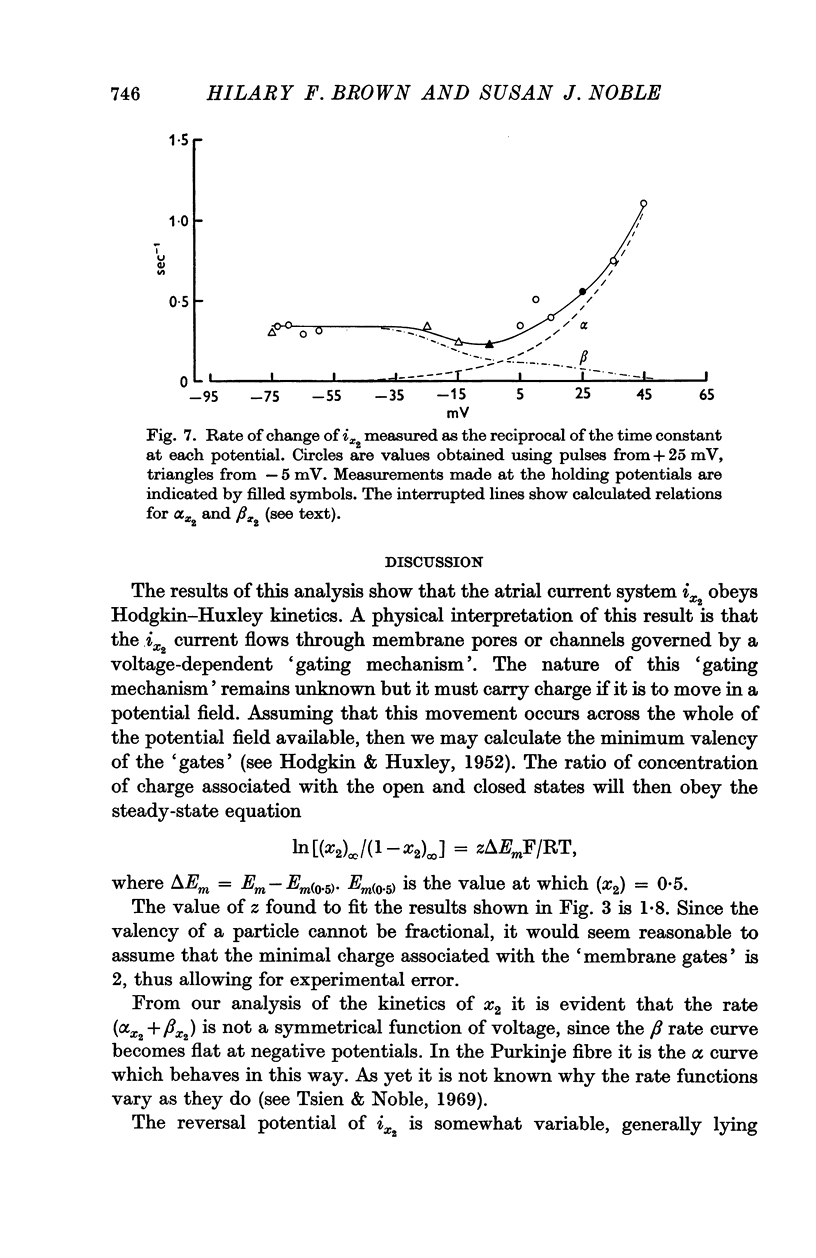
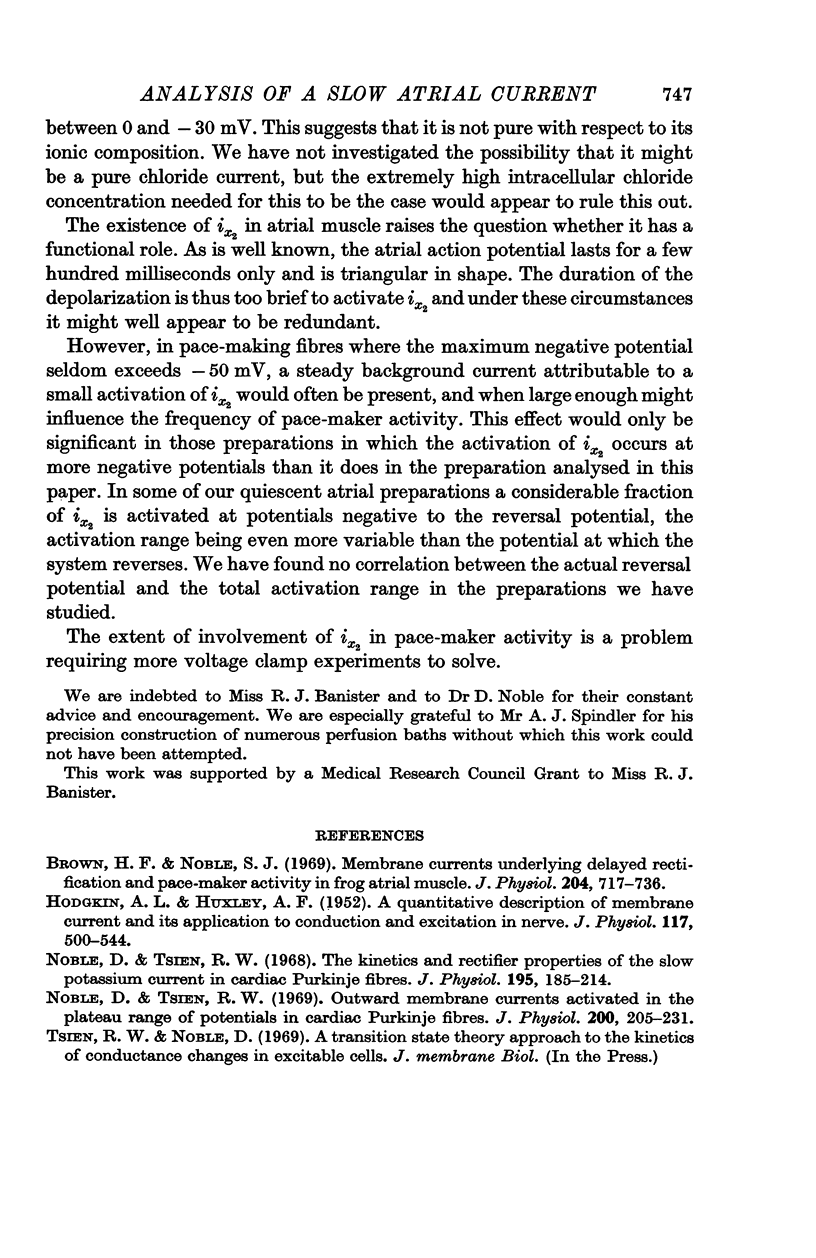
Selected References
These references are in PubMed. This may not be the complete list of references from this article.
- Brown H. F., Noble S. J. Membrane currents underlying delayed rectification and pace-maker activity in frog atrial muscle. J Physiol. 1969 Oct;204(3):717–736. doi: 10.1113/jphysiol.1969.sp008940. [DOI] [PMC free article] [PubMed] [Google Scholar]
- Noble D., Tsien R. W. Outward membrane currents activated in the plateau range of potentials in cardiac Purkinje fibres. J Physiol. 1969 Jan;200(1):205–231. doi: 10.1113/jphysiol.1969.sp008689. [DOI] [PMC free article] [PubMed] [Google Scholar]
- Noble D., Tsien R. W. The kinetics and rectifier properties of the slow potassium current in cardiac Purkinje fibres. J Physiol. 1968 Mar;195(1):185–214. doi: 10.1113/jphysiol.1968.sp008454. [DOI] [PMC free article] [PubMed] [Google Scholar]


